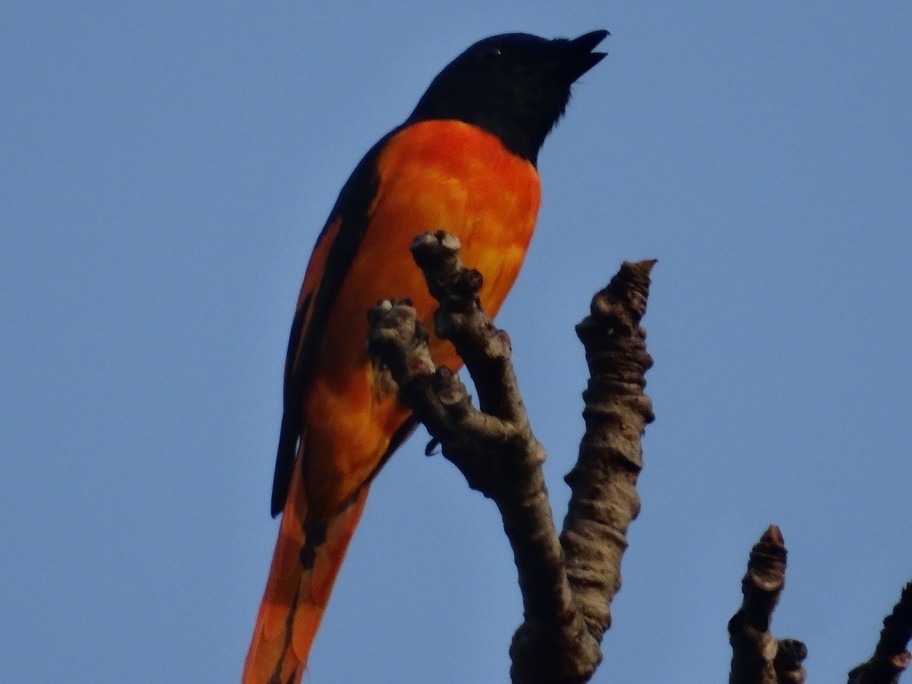Scarlet Minivet
A species of Minivets Scientific name : Pericrocotus speciosus Genus : Minivets
Scarlet Minivet, A species of Minivets
Botanical name: Pericrocotus speciosus
Genus: Minivets
Content
Description General Info
 Photo By Satheesan.vn , used under CC-BY-SA-3.0 /Cropped and compressed from original
Photo By Satheesan.vn , used under CC-BY-SA-3.0 /Cropped and compressed from original Description
The scarlet minivet is 20–22 cm (7.9–8.7 in) long with a strong dark beak and long wings. The male has black upperparts and head, and scarlet underparts, tail edges, rump and wing patches. The shape and colour of the wing patches and the shade or orange in the male varies across populations. In the subspecies nigroluteus and marchesae from south Philippines the scarlet/orange is entirely replaced by yellow. The female is grey above, with yellow underparts (including the face), tail edges, rump and wing patches. 
Size
20 - 22 cm
Colors
Black
Yellow
Red
Gray
Blue
Orange
Nest Placement
Tree
Feeding Habits
Scarlet Minivet primarily preys on insects, employing tactics such as flycatching or foraging while perched. It has adapted to dislodge prey by vigorously flapping its wings among foliage.
Habitat
Scarlet Minivet hails from forested regions in Southeast Asia, mainly occupying broadleaf evergreen, semi-evergreen, and deciduous forests, as well as peat swamp-forests. Adapted to dense canopies, they thrive up to altitudes of 2100 meters, but mostly remain below 915 meters. This bird favors wooded areas, including gardens with lush tree cover, particularly in hilly and undulating terrains.
Dite type
Insectivorous
General Info
Feeding Habits
Bird food type
Behavior
This minivet catches insects in trees by flycatching or while perched. It flushes insects out of foliage by beating its wings hard. Scarlet minivet will form small flocks. Its song is a pleasant whistling. This bird nests high up in the treetops. The nest is a cup-like structure woven with small twigs and spiders' webs to increase the strength of the nest. Two or three spotted pale green eggs are laid. Incubation is mainly by the female, but both birds help to raise the offspring. 
Scientific Classification
Phylum
Chordates Class
Birds Order
Perching birds Family
Cuckoo-shrikes Genus
Minivets Species
Scarlet Minivet